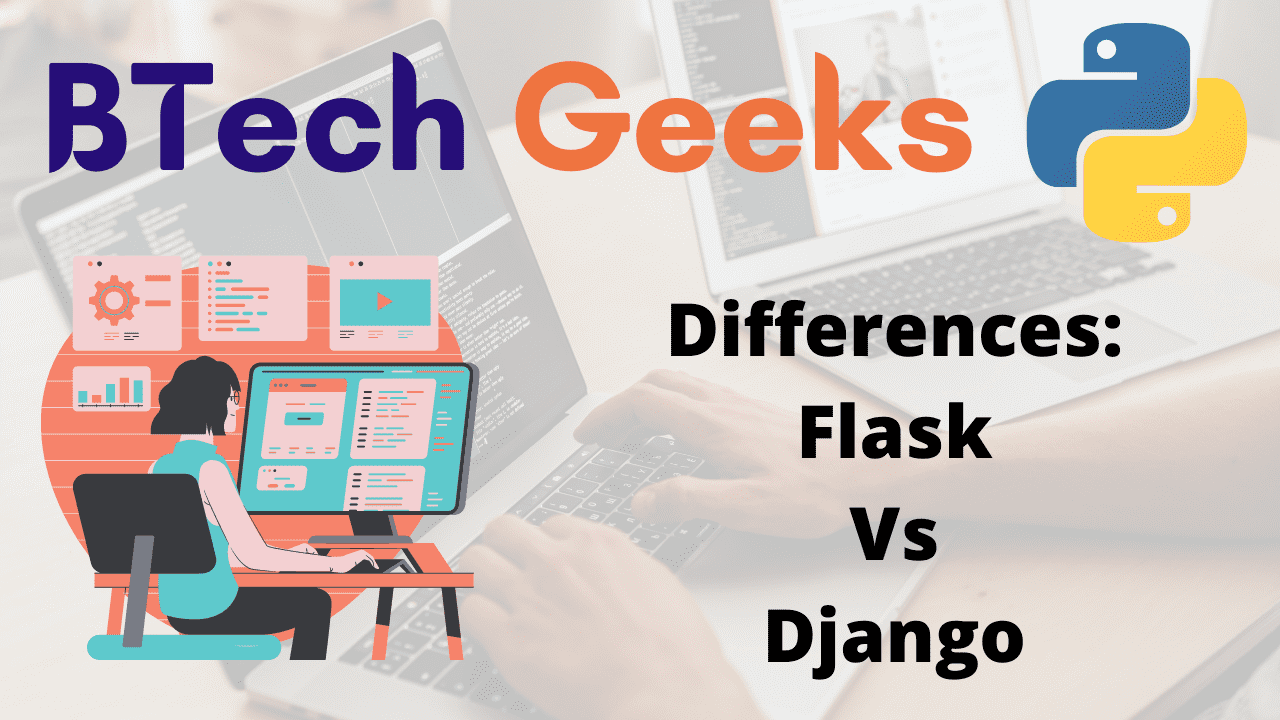Django and Flask are two of the most popular Python web frameworks. Flask emerged as an alternative to Django because designers required more flexibility that would allow them to select how they want to implement things, but Django does not allow such modification of its modules. Flask is so simple and basic that working with it allows an experienced Python designer to complete projects in record time.
Here are some examples of Flask and Django applications: Flask is fantastic for building basic locales with inactive substance, for example, blogs; it gives all the usefulness you require and allows for extensive customization, whereas Django is fantastic for building complex locales with active substance, with adaptability in mind; huge ventures that require out-of-the-box arrangements can be sent extremely quickly. Flask is perfect for developing simple web applications. Django enables faster delivery of more complex web apps since its modules are preconfigured to provide quick app development and maintenance.
Django
Django is a large web framework designed to make the web development process easier. It is a Python web development framework that is free source and based on the MVT-Model View Template architecture.
It emphasizes reusable components, fewer lines of code, and rapid development. Django also includes its own ORM (Object-relational Mapping) system.
That is, it works with models (which have a similar structure to database tables) and is used to connect DB tables to the rest of the application code.
Django Applications use a directory structure and are best suited for large-scale web applications (like E-Commerce, Social Media, etc.)
- What can you do with python: Usage guide | 9 Cool Things to do with Python Programming
- What is python used for: Beginner’s Guide to python
- Python Data Persistence – Core – Updating Records
Django’s Features:
Here are some of Django’s key features:
- Model – View – Controller (MVC) architecture is available.
- Libraries that have been predefined for imaging, graphics, scientific calculations, and so on.
- Multiple databases are supported.
- Operating system that is cross-platform.
- Optimization of a site over multiple specialised servers
- Front-end tools such as Ajax, jQuery, Pyjamas, and others are supported.
- Supports multiple languages and characters.
Flask
Flask is another Python-based microframework for web application development. Armin Ronacher presented it in 2011 as a trial technique of combining two technologies, Werkzeug (a server framework) and Jinja2 (a template library).
It was planned to be a test run in a zip file that ultimately stems from Flask’s good influence.
Flask is classified as a microframework because it does not rely on external libraries to accomplish framework operations. It has its own set of tools, technologies, and libraries to help in web application development.
Many developers prefer to start with Flask since it is more independent and adaptable.
Features:
Here are some of Flask’s key features.
- Support for unit testing is built-in/integrated.
- Request dispatching through REST.
- It makes use of the Ninja2 template engine.
- It is built on the Werkzeug toolbox.
- Secure cookie support (client-side sessions).
- Documentation is extensive.
- Compatibility with the Google app engine.
- APIs are well-formed and reliable.
- Simple to deploy in production
Differences: Django Vs. Flask
| Django | Flask |
| Django is an Extensive web framework. It is a full-featured Python-based framework with MVT architecture. It comes with great documentation. | It is a microweb framework. It features minimalistic built-in packages that are likewise Python-based. The framework is light, simple, and easily adaptable. It is suitable for beginners. |
| Urls.py is used to configure the association properties, and requests are handled by the primary coordinating see of the regex list. | The URI is regularly not set by the see decorator and centralized setup additionally is also possible. Recently, the designs have been coordinated with the URIs, the last mentioned is sorted in a default arrange |
| It has a proper Directory-based design, with all models, views, URLs, and templates, etc. stored separately in different files. | It has a more modular structure and is used to develop single-page applications (SPAs). As a result, all Views, URLs, and so on can be kept in the same file. |
| ORM system is provided. It already has an ORM system. As a result, working with databases is simplified. | There is no ORM system. It does not provide an ORM system and does not include any models. It also includes different methods for working with databases. |
| Extend Layout in Django is a conventional extend structure. | Extend Layout in Flask is an Arbitrary structure. |
| More important Community. It has been in the market for far longer than Flask. As a result, it has a greater community following than Flask. | Flask has Small Community. Because it is newer to the market than Django, it has smaller community support than Django. |
| Built-in packages are large. It is completely loaded, which means that all libraries are already built-in, eliminating the need to install/import third-party packages. As a result, various features are conveniently accessible. | Because it is more adaptable, it has fewer built-in packages. As a result, developers have more room to create. |
| Django includes various built-in features for protecting applications from forgeries. It provides more security. | Security: The Flask-Security package includes comparable capabilities for protecting apps against internet forgeries. |
| It is suitable for large and complex projects. | Flask is Suitable for small and medium-sized projects. |

